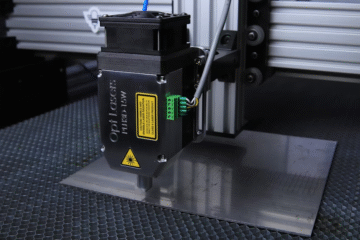The Rise of Aerial Intelligence

By Machines4U

Since the advent of drones, literally every Hollywood film featuring the airborne robots has been about warfare and terror. For those who have no personal experience with the phenomenal devices, it can be easy to fall into a false conception that they are militant by nature.
As with many of our modern day technological marvels, drones had their birthplace with Nikola Tesla. In 1898, Tesla patented his radio-wave, remote vehicle control system. At the time, he prophesied the rise of drones in both commercial and military applications. While he did envision them being subsumed by the military, his prediction was that they would be bringers of peace through their power for destruction. With emotionless, weaponised eyes in the sky, who would dare disrupt the status-quo?
While the first half of Tesla’s prediction has eventuated, we’re yet to see any hints of the “peace among nations” he envisioned. However, there are many areas of innovation in which drones are being put to non-violent applications.
Drones in agriculture and forestry
As Drone technology has steadily progressed, we’re now getting a glimpse into the full potential of these innovative and interesting machines. Within the Agriculture and Forestry industry, Drones are now being utilised to collect data and create real-time, multi-spectral images for industry projects.
One of the most fascinating parts of the process is once the drone has carefully surveyed the desired land, it creates and exact 3D replica of the area. This is done by the drones in real-time as it compiles and connects the images its captures, feeding it directly into its software. This software is essentially programmed to calculate the angle at which each image was taken to get an accurate reading of the terrain through the images. The computer then creates an exact 3D replica of the land from these photos.
Traditionally, land surveying is an arduous process that would require workers mapping large areas of changing terrains to get an accurate set of images that can be later used to create a map of the area. Through drone technology though, engineers are now able to create, visualise and sequence these image with relatively small effort and cost.Also, architects can now undergo conceptual site planning with drone mapped data and have a guarantee that sitemap date is both up to date and accurate.
Save the Central Walbran Valley! (Drone Footage) – Canada’s Grandest Ancient Forest at Risk from Ancient Forest Alliance on Vimeo.
That all being said, there are some negatives that come with the idea of drone use in these industries. There has been much debate online on personal privacy and drone use, a small majority of people feel uncomfortable about a camera drone hovering around them or their property. For this reason, most local government have regulations in place to ensure they are used for the right purposes.
On top of this, there are also some more simple issues with the current state of drone technology such as low flight times and the need for ideal flying conditions to perform. Then there’s also the learning curve that comes with avoiding flying your brand new $30,000 drone into a idle tree or innocent cow, grazing in the field.
Nevertheless though, drone technology will only improve from here and have already revolutionised the forestry and agricultural industry. They provide faster work completion with immediate, accurate results and low costs and from here, one can only wonder how drones can be further implemented to enhance forestry or agricultural machinery.





No Comment